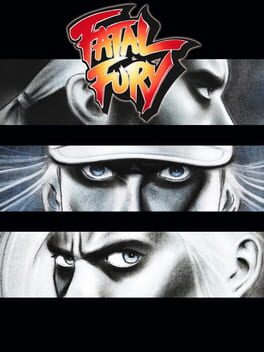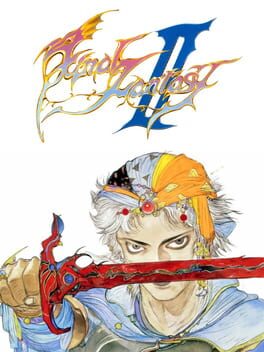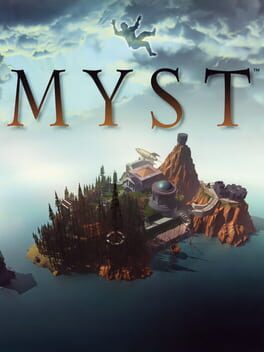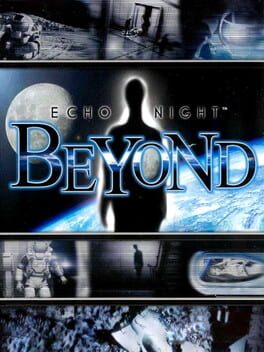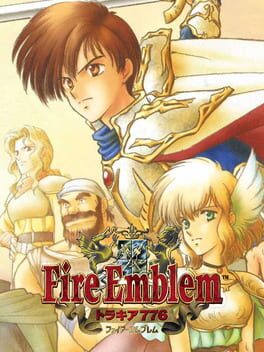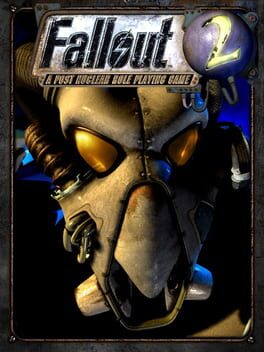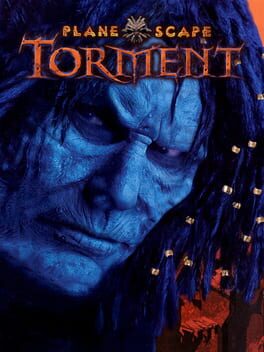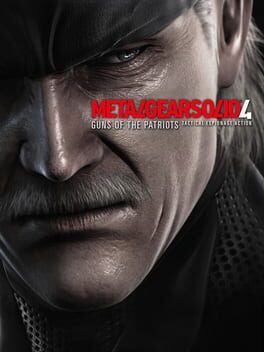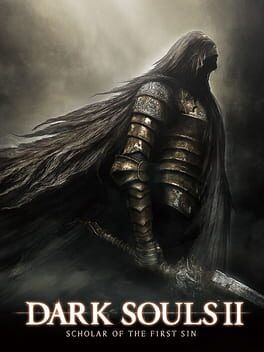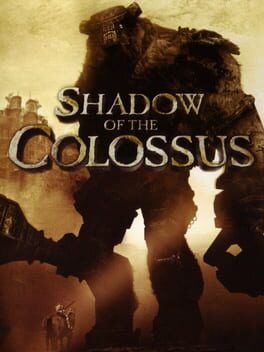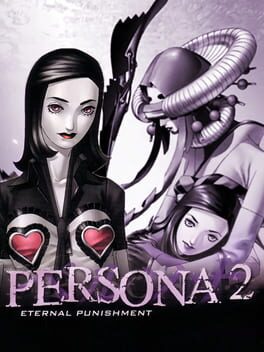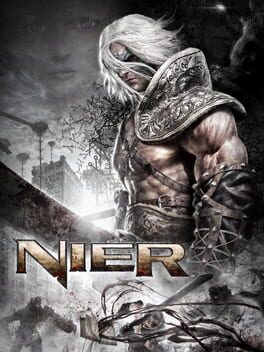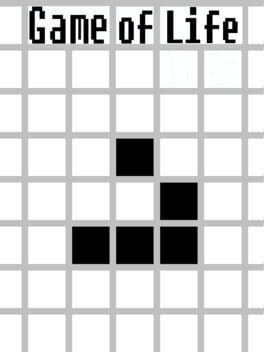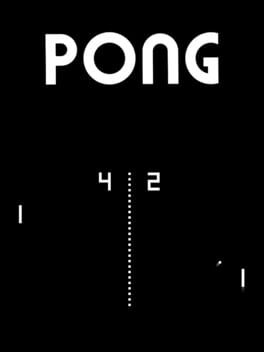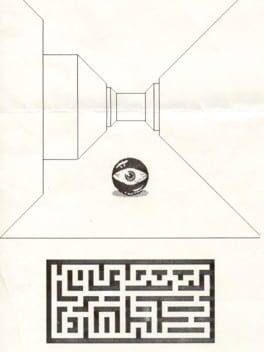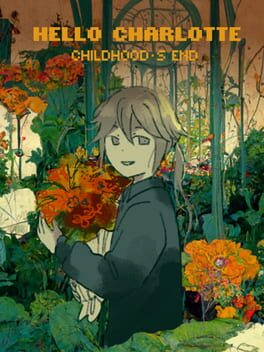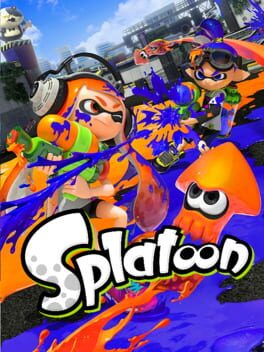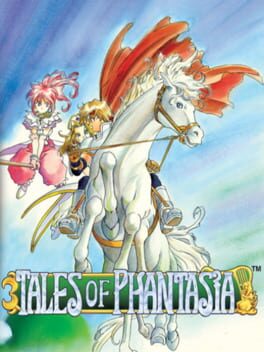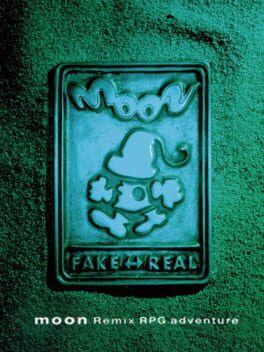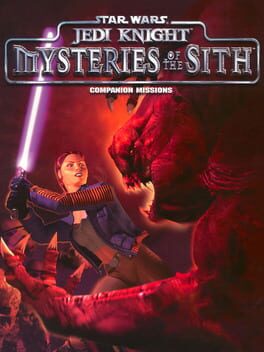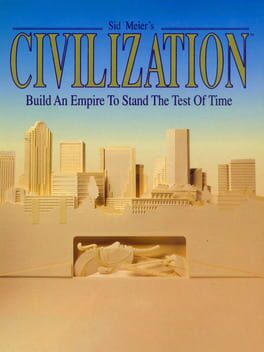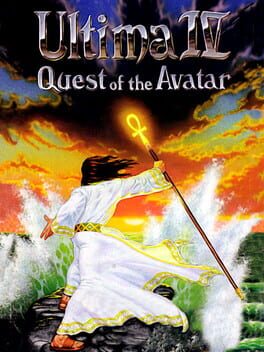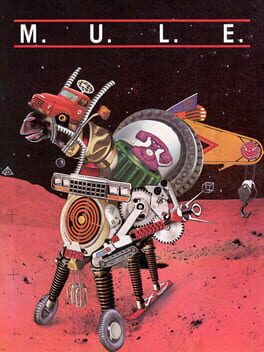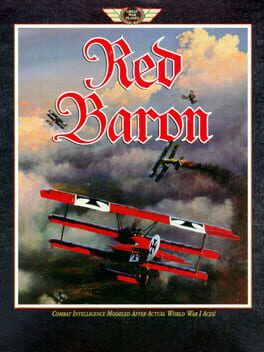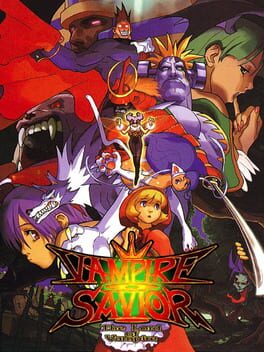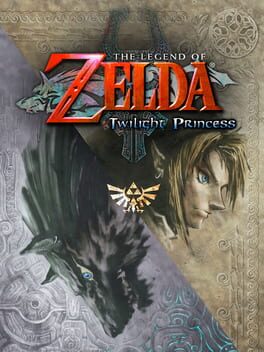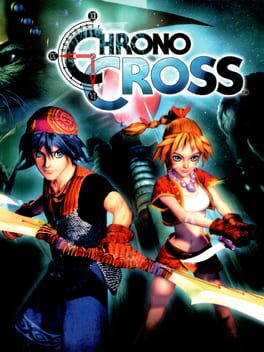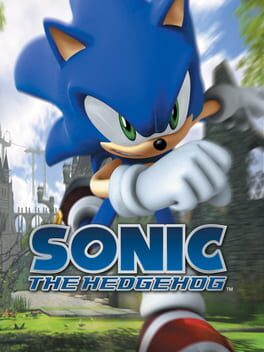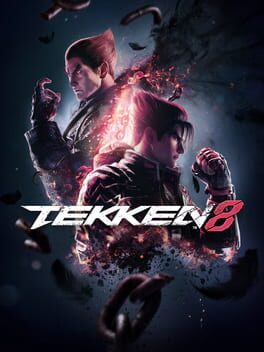CorpsSansOrganes
BACKER
511 reviews liked by CorpsSansOrganes
Fatal Fury
1991
Think the best way of articulating why I find this supposedly old/outdated fighter sick as someone who came to it without ever having played a subsequent SNK fighter is the infamous Geese Howard boss fight. In a vacuum, he's as cheap as its reputation would lead you to believe: his Reppuken has damage output that's approximately one third of your health as well as range high enough for it to severely limit your options against him and he can also casually invalidate the attacks you manage to land on him with a throw that does comparable damage to the Reppuken. Prepare to see that screen of your character falling out the window often.
However, the more times you die to him, the more predictable (no pun intended) his AI starts to become. If you jump forward and attack, he will always go forward and attack. If you try to approach him by using a special, he'll prevent you from doing so with the Reppuken. If you stand still, he'll do the same for a bit before making his move. So you have to pick up on every little quirk on his AI and find out how to bait him into a situation where he gets hit. While the sheer damage of his heavy hitting attacks would seem unfair, getting one hit on him more often than not means throwing him out of his comfort zone and turning that one hit into multiple, thus doing a similar amount of damage to what he would have done to you with one hit. If you keep this up, you can even get him into a situation where your special move will land on the early frames of his Reppuken, interrupting said attack. Through this plan of attack as well as, my noob at fighting games ass was able to eventually 2-0 him and throw him out the window like he did to me 28 times.
With its small player roster of three characters and its arcade mode that faces you off against opponents designed with no expectations of being playable, Fatal Fury 1 feels like it was designed as a single player game first and with multiplayer as an afterthought. And I am being 100% unironic when I say this design philosophy makes me feel like I became a better fighting game player, be it through learning how to exploit the habits of seemingly unbeatable opponents or by building up the ability to press buttons faster to make the most of those small moments of vulnerability when they pop up. As someone whose engagement with fighting games has usually been respecting them from the sidelines and/or having a quick laugh in a run of arcade mode on the lowest difficulty, I truly get them now.
However, the more times you die to him, the more predictable (no pun intended) his AI starts to become. If you jump forward and attack, he will always go forward and attack. If you try to approach him by using a special, he'll prevent you from doing so with the Reppuken. If you stand still, he'll do the same for a bit before making his move. So you have to pick up on every little quirk on his AI and find out how to bait him into a situation where he gets hit. While the sheer damage of his heavy hitting attacks would seem unfair, getting one hit on him more often than not means throwing him out of his comfort zone and turning that one hit into multiple, thus doing a similar amount of damage to what he would have done to you with one hit. If you keep this up, you can even get him into a situation where your special move will land on the early frames of his Reppuken, interrupting said attack. Through this plan of attack as well as, my noob at fighting games ass was able to eventually 2-0 him and throw him out the window like he did to me 28 times.
With its small player roster of three characters and its arcade mode that faces you off against opponents designed with no expectations of being playable, Fatal Fury 1 feels like it was designed as a single player game first and with multiplayer as an afterthought. And I am being 100% unironic when I say this design philosophy makes me feel like I became a better fighting game player, be it through learning how to exploit the habits of seemingly unbeatable opponents or by building up the ability to press buttons faster to make the most of those small moments of vulnerability when they pop up. As someone whose engagement with fighting games has usually been respecting them from the sidelines and/or having a quick laugh in a run of arcade mode on the lowest difficulty, I truly get them now.
Makes sense that most of the communist-chanting options are played almost as jokes, because no one believes those grand statements anymore. More than that, they can't believe. They almost lost their meaning. This town is more complicated than all of that.
The sense of longing and the pain that comes from nostalgia are not enough: the world, the people, society, they have layers and layers. Reality is broken, and the past holds too many traumas for everyone. But you can still peel most of those layers, and get to the bottom of the heart. It doesn't feel like a task or a chore in any moment, it's like the answers are always driving you forward in such a small and concrete environment. You HAVE to keep going!! Be the detective, untangle every mess in your life and roll those dice!!!
The sense of longing and the pain that comes from nostalgia are not enough: the world, the people, society, they have layers and layers. Reality is broken, and the past holds too many traumas for everyone. But you can still peel most of those layers, and get to the bottom of the heart. It doesn't feel like a task or a chore in any moment, it's like the answers are always driving you forward in such a small and concrete environment. You HAVE to keep going!! Be the detective, untangle every mess in your life and roll those dice!!!
Stellar Blade
2024
Mother
1989
I was wondering why this game had a reputation for being way more brutal/grindy than it actually is but then I saw that the Starmen.net guide I was used recommended that you grind to a level where you one-shot enemies at a point where you're already safely two-shotting them and remembered that the average Nintendo fan can't be trusted to know shit about RPGs
Final Fantasy II
1988
When a friend first asked me how I would describe Final Fantasy II, I was about half way through the game, and had just met Leila. I didn’t really know how to describe it, it was something I couldn’t compare to anything I’d played before. It led me through the story like an early JRPG but with early WRPG mechanics. It was bizarre and completely threw me off from what I learned in FFI. So much of what I learned from the first game didn’t matter at all now, and what it was trying to teach me seemed almost alien. So of course, my natural response to my friend was a wary, “Have you ever played… Morrowind?”
Final Fantasy II is nothing like Morrowind. Well, it has its similarities, as comparing any game from the same genre to each other would, I guess. I came into Final Fantasy II having only the original Final Fantasy to compare it to… eh, within the Final Fantasy series at least, as I have played a handful of 3rd-gen RPGs before it. Maybe it’s why I ended up thinking of FFII so positively compared to others. Maybe that’s a negative, but I like to think of it as a positive. It keeps me thinking of FFII in the bubble it originally released to, but unfortunately that also lacks me being able to compare it to much else.
One thing I should warn before diving fully into the review is that I did play the game in Japanese, so some of the names for things might be spelled differently from my own personal transliteration vs other later official English translations (wait his name was Josef and not Joseph this whole time?!). The Famicom version I believe is also missing quite a few additions that future versions had added later on, including ones added even a couple years later in the Famicom dual-release of both FFI + FFII.
—------------------------------------------------------------
From first glance, I could immediately tell that Final Fantasy II had improved drastically from its predecessor. The creators were able to expand A LOT on what they made with the original. Just to list a few:
• You’re now able to fully go into buildings and walk around. You can even see little Firion sleeping in the inn!
• There's a crazy amount of new magic you can learn (which you see early on thanks to Ming Wu).
• You can now see your character’s negative status effects play as a funny symbol on top of them in battle (black glasses for blind, green swirls for poison, they literally turn into a rock when hit with the stone status!). It looks great and makes it easier for players to remember what exactly the current status of their party is just at a glance.
• The character designs are more varied and more detailed, even if Firion is just the fighter sprite from the first game. With Maria, we can now see our first true playable female character in the series, rather than the assumed fully-male cast of the first (or at least that’s how the English guidebook describes the cast which uh, infamously got quite a few things wrong about the game, so take that as you will LOL). You meet a very colorful cast of characters right at the start as well, with a good amount having fairly unique designs (Ming Wu is my favorite)!
• Lastly, the thing I noticed and was so happy to see was that you can now save whenever you want. Well, whenever you’re on the overworld map. But, still! It’s a button that’s always on your menu screen. You don’t have to bank on having a hotel or cottage in your pocket so you can save before a dungeon, which can make expeditions infinitely less frustrating.
The story of FFII is surprisingly engaging for a 3rd-gen game, with it starting out with a 5 minute long interactive cutscene kinda thing. Watching it, you quickly learn that you now have a set story with characters that have a set destiny. You can name them and train them to be whatever you want, but no matter what, the story has a path it will always take with characters you can’t always predict. Oh boy, how you can not predict. About 2/3rds of the temporary party members who join you end up dying! Even NPCs you don’t interact with too often end up dying! But hey, the story does focus around war, and what’s war without loss. Though more realistically, I imagine they killed off a majority of your short-term party members as a way to cycle through different characters and show the player different builds they themselves could evolve on. My favorite non-player characters that I met along the way were Paul the Ninja, and Sid and his son, who offer a shuttle with their flying boat not unlike the one from the first game… hey wait, why does Sid have his clearly underaged son in a bar? Oh well, it works for the story. Just try not to think about it!
There’s little things I can nitpick though, of course. I absolutely hate the new map. I understand this map is WAY bigger than the last, and the illusion of the globe allows them to fit more with less, but holy shit its soooo slow - and if I just want to check what direction I want to go to reach a dungeon, I have to slowlyyyyyyy wait for the globe to turnnn and inchhhh and oooo we’re almost there, baby!!!! Well, this shouldn’t be a problem, right? Final Fantasy I, Dragon Quest, Legend of Zelda are all games that provide a full map for you in the manual to glance at, so there must be one in this manual- nope. Okay, what about the guidebook? You know, the thing you spend extra money on to hold your hand and show you how to get through the whole game- nope. There’s no maps at all actually, even for the dungeons! Remember how Final Fantasy I had big maps for the player to scan through for everything, all within the manual packaged with the game? Well, Final Fantasy II says “Fuck you, why don’t you figure out,” as they hand you Slowpoke Rodriguez’s favorite class globe.
The manual and guidebook at least are very useful in including every little detail about the new leveling system, and also informing the player on what all the new magic does. A stupid complaint, but skimming through this lovely mapless guidebook, I was excited to see Chocobos appear, which are like giant chickens your player can ride on! Unfortunately, I never ran into them once throughout the entire game. They seemed cute, and the book says you can find them in a specific forest if you wander, but I never found one, even when purposefully looking for them. Oh well, maybe I was just unlucky!
Wait, that’s it? Those are the only complaints? It seems like FFII should smell like roses in comparison to FFI after all that, shouldn’t it? Well, it does…! It does, except for one very small, very tiny detail…
GAMEPLAY AND RPG MECHANICS
FFII doesn’t level in the way that Dragon Quest or even the original Final Fantasy do. In fact, the closest comparison I can personally make to a game that I’ve played that came out before FFII is regular tabletop DND. When you want to level up, you have to focus on a specific skill or trait. It’s not as simple as leveling up your magic to improve your magic; you have to focus on what exactly you want to level up in your magic. Did you want your magic attack to be stronger? Then focus on using the specific spell you want to be stronger, as the more you use it the more it levels up. Did you need more MP? Then use more magic to get more magic! Using magic in general also helps level up your magic strength… but specifically your intelligence or spirit which correlate to your black and white magic respectively. See where I got the Morrowind comparison? It’s a lot, but as you can see with my magic example, a lot of it relies on each other, so if you play naturally, you should still level up naturally like you would in FF1.
That would be all fine and dandy, except you don’t level up the way the creators intended. I don’t know whose idea it was to go against the golden rule for JRPGs since Dragon Quest: Allow players to level up quickly with the game requiring more points to level up the further they play. For example, to get to level 2 in… let’s say using a sword, maybe you need to use it 10 times before it reaches level 2. After that, then you need to use it 20 times to reach level 3, and so far so forth. FFII doesn’t do that, and I think that’s where its biggest flaw shows. It requires you to use whatever it is you want 100 times each time you want to level it up, all from the start. It’s awful, to put it lightly. The great thing to remember is all the Final Fantasys on the Famicom are insanely broken! As a result, I quickly found out that you can input a move on a party member and quickly cancel it and do it again. It only takes one move but it still counts the first use, essentially doubling the points I get from it. Do this 50 times, and you just leveled yourself up in one battle. Though of course, it’s just that one thing you leveled up, whether that be a magic skill, your attack, defense, HP, MP, or whatever else you focused on. It unfortunately also can mess with the leveling a crazy amount as well. Ugh, just think! This would be significantly less of a problem if they just followed the guide of leveling-up starting fast only to slow it down the further you go. They did it in FFI, so they must have found an issue to force the mandatory 100 points for FFII… On top of that all, the same issues with magic in FFI still exist in FFII, with a nice chunk of spells being completely broken and not working the way they intended. Most infamously it affects Ultima, a spell intended to be the most powerful in the entire game. The only way to figure out what works and what doesn’t is through trial and error- how horrendous! Thankfully, we live in the future, so I was able to quickly find a guide online that lets modern players know what magic to not waste their time on.
This is the biggest turn-off of Final Fantasy II to players, and I don’t blame them. I especially don’t blame players who had to try and figure out everything without the manual guiding them through this incredibly involved leveling system. I found the manual and guidebook for FFII on Internet Archive, and even with that by my side I constantly had to look at it over and over to remember what exactly I had to do to level-up myself up. Eventually, I just wrote and drew a shitty guide just for myself so I could more easily memorize it. In the end, I got there! Then I had to read and memorize all the new magic spells! Oh, well. As someone who loves journaling and taking notes, I really didn’t mind it, but of course I can understand how unbearable it could be for someone who doesn’t like it. It reminded me, again, of tabletop gaming and how when I play that with friends, I often fill a whole booklet with my little notes. Maybe I was used to it? Maybe I just felt it immersed me better into the story, and helped me feel more understanding of how the gameplay meshed with the narrative. In the end, it helped me gain a bit of an emotional attachment to it all; characters and game mechanics alike.
—------------------------------------------------------------
Well, how would I compare it to my friend now, after finishing it? I’ve been told the Romancing Saga series takes heavy inspiration from it mechanically, and by the time I finished I could see the Star Wars parallels loud and clear. Obviously, it has its Wizardry, Ultima, and Dragon Quest influences… What didn’t back then? But how would I describe FF2?
It’s broken, it’s unreliable, it’s confusing. But it’s also rewarding, emotional, and easy to get wrapped into. It tried crazy things for both the time and platform it released on, but it found its people, and its people found it.
Final Fantasy II is like Final Fantasy II. You wanna know what THAT means? Well, play it and you’ll find out!
4/5
Final Fantasy II is nothing like Morrowind. Well, it has its similarities, as comparing any game from the same genre to each other would, I guess. I came into Final Fantasy II having only the original Final Fantasy to compare it to… eh, within the Final Fantasy series at least, as I have played a handful of 3rd-gen RPGs before it. Maybe it’s why I ended up thinking of FFII so positively compared to others. Maybe that’s a negative, but I like to think of it as a positive. It keeps me thinking of FFII in the bubble it originally released to, but unfortunately that also lacks me being able to compare it to much else.
One thing I should warn before diving fully into the review is that I did play the game in Japanese, so some of the names for things might be spelled differently from my own personal transliteration vs other later official English translations (wait his name was Josef and not Joseph this whole time?!). The Famicom version I believe is also missing quite a few additions that future versions had added later on, including ones added even a couple years later in the Famicom dual-release of both FFI + FFII.
—------------------------------------------------------------
From first glance, I could immediately tell that Final Fantasy II had improved drastically from its predecessor. The creators were able to expand A LOT on what they made with the original. Just to list a few:
• You’re now able to fully go into buildings and walk around. You can even see little Firion sleeping in the inn!
• There's a crazy amount of new magic you can learn (which you see early on thanks to Ming Wu).
• You can now see your character’s negative status effects play as a funny symbol on top of them in battle (black glasses for blind, green swirls for poison, they literally turn into a rock when hit with the stone status!). It looks great and makes it easier for players to remember what exactly the current status of their party is just at a glance.
• The character designs are more varied and more detailed, even if Firion is just the fighter sprite from the first game. With Maria, we can now see our first true playable female character in the series, rather than the assumed fully-male cast of the first (or at least that’s how the English guidebook describes the cast which uh, infamously got quite a few things wrong about the game, so take that as you will LOL). You meet a very colorful cast of characters right at the start as well, with a good amount having fairly unique designs (Ming Wu is my favorite)!
• Lastly, the thing I noticed and was so happy to see was that you can now save whenever you want. Well, whenever you’re on the overworld map. But, still! It’s a button that’s always on your menu screen. You don’t have to bank on having a hotel or cottage in your pocket so you can save before a dungeon, which can make expeditions infinitely less frustrating.
The story of FFII is surprisingly engaging for a 3rd-gen game, with it starting out with a 5 minute long interactive cutscene kinda thing. Watching it, you quickly learn that you now have a set story with characters that have a set destiny. You can name them and train them to be whatever you want, but no matter what, the story has a path it will always take with characters you can’t always predict. Oh boy, how you can not predict. About 2/3rds of the temporary party members who join you end up dying! Even NPCs you don’t interact with too often end up dying! But hey, the story does focus around war, and what’s war without loss. Though more realistically, I imagine they killed off a majority of your short-term party members as a way to cycle through different characters and show the player different builds they themselves could evolve on. My favorite non-player characters that I met along the way were Paul the Ninja, and Sid and his son, who offer a shuttle with their flying boat not unlike the one from the first game… hey wait, why does Sid have his clearly underaged son in a bar? Oh well, it works for the story. Just try not to think about it!
There’s little things I can nitpick though, of course. I absolutely hate the new map. I understand this map is WAY bigger than the last, and the illusion of the globe allows them to fit more with less, but holy shit its soooo slow - and if I just want to check what direction I want to go to reach a dungeon, I have to slowlyyyyyyy wait for the globe to turnnn and inchhhh and oooo we’re almost there, baby!!!! Well, this shouldn’t be a problem, right? Final Fantasy I, Dragon Quest, Legend of Zelda are all games that provide a full map for you in the manual to glance at, so there must be one in this manual- nope. Okay, what about the guidebook? You know, the thing you spend extra money on to hold your hand and show you how to get through the whole game- nope. There’s no maps at all actually, even for the dungeons! Remember how Final Fantasy I had big maps for the player to scan through for everything, all within the manual packaged with the game? Well, Final Fantasy II says “Fuck you, why don’t you figure out,” as they hand you Slowpoke Rodriguez’s favorite class globe.
The manual and guidebook at least are very useful in including every little detail about the new leveling system, and also informing the player on what all the new magic does. A stupid complaint, but skimming through this lovely mapless guidebook, I was excited to see Chocobos appear, which are like giant chickens your player can ride on! Unfortunately, I never ran into them once throughout the entire game. They seemed cute, and the book says you can find them in a specific forest if you wander, but I never found one, even when purposefully looking for them. Oh well, maybe I was just unlucky!
Wait, that’s it? Those are the only complaints? It seems like FFII should smell like roses in comparison to FFI after all that, shouldn’t it? Well, it does…! It does, except for one very small, very tiny detail…
GAMEPLAY AND RPG MECHANICS
FFII doesn’t level in the way that Dragon Quest or even the original Final Fantasy do. In fact, the closest comparison I can personally make to a game that I’ve played that came out before FFII is regular tabletop DND. When you want to level up, you have to focus on a specific skill or trait. It’s not as simple as leveling up your magic to improve your magic; you have to focus on what exactly you want to level up in your magic. Did you want your magic attack to be stronger? Then focus on using the specific spell you want to be stronger, as the more you use it the more it levels up. Did you need more MP? Then use more magic to get more magic! Using magic in general also helps level up your magic strength… but specifically your intelligence or spirit which correlate to your black and white magic respectively. See where I got the Morrowind comparison? It’s a lot, but as you can see with my magic example, a lot of it relies on each other, so if you play naturally, you should still level up naturally like you would in FF1.
That would be all fine and dandy, except you don’t level up the way the creators intended. I don’t know whose idea it was to go against the golden rule for JRPGs since Dragon Quest: Allow players to level up quickly with the game requiring more points to level up the further they play. For example, to get to level 2 in… let’s say using a sword, maybe you need to use it 10 times before it reaches level 2. After that, then you need to use it 20 times to reach level 3, and so far so forth. FFII doesn’t do that, and I think that’s where its biggest flaw shows. It requires you to use whatever it is you want 100 times each time you want to level it up, all from the start. It’s awful, to put it lightly. The great thing to remember is all the Final Fantasys on the Famicom are insanely broken! As a result, I quickly found out that you can input a move on a party member and quickly cancel it and do it again. It only takes one move but it still counts the first use, essentially doubling the points I get from it. Do this 50 times, and you just leveled yourself up in one battle. Though of course, it’s just that one thing you leveled up, whether that be a magic skill, your attack, defense, HP, MP, or whatever else you focused on. It unfortunately also can mess with the leveling a crazy amount as well. Ugh, just think! This would be significantly less of a problem if they just followed the guide of leveling-up starting fast only to slow it down the further you go. They did it in FFI, so they must have found an issue to force the mandatory 100 points for FFII… On top of that all, the same issues with magic in FFI still exist in FFII, with a nice chunk of spells being completely broken and not working the way they intended. Most infamously it affects Ultima, a spell intended to be the most powerful in the entire game. The only way to figure out what works and what doesn’t is through trial and error- how horrendous! Thankfully, we live in the future, so I was able to quickly find a guide online that lets modern players know what magic to not waste their time on.
This is the biggest turn-off of Final Fantasy II to players, and I don’t blame them. I especially don’t blame players who had to try and figure out everything without the manual guiding them through this incredibly involved leveling system. I found the manual and guidebook for FFII on Internet Archive, and even with that by my side I constantly had to look at it over and over to remember what exactly I had to do to level-up myself up. Eventually, I just wrote and drew a shitty guide just for myself so I could more easily memorize it. In the end, I got there! Then I had to read and memorize all the new magic spells! Oh, well. As someone who loves journaling and taking notes, I really didn’t mind it, but of course I can understand how unbearable it could be for someone who doesn’t like it. It reminded me, again, of tabletop gaming and how when I play that with friends, I often fill a whole booklet with my little notes. Maybe I was used to it? Maybe I just felt it immersed me better into the story, and helped me feel more understanding of how the gameplay meshed with the narrative. In the end, it helped me gain a bit of an emotional attachment to it all; characters and game mechanics alike.
—------------------------------------------------------------
Well, how would I compare it to my friend now, after finishing it? I’ve been told the Romancing Saga series takes heavy inspiration from it mechanically, and by the time I finished I could see the Star Wars parallels loud and clear. Obviously, it has its Wizardry, Ultima, and Dragon Quest influences… What didn’t back then? But how would I describe FF2?
It’s broken, it’s unreliable, it’s confusing. But it’s also rewarding, emotional, and easy to get wrapped into. It tried crazy things for both the time and platform it released on, but it found its people, and its people found it.
Final Fantasy II is like Final Fantasy II. You wanna know what THAT means? Well, play it and you’ll find out!
4/5
Persona 3 Reload
2024
Kinda way too disillusioned by the superfluous pageantry of P-Studio's Persona titles to keep up with this and it's making me hate playing video games, so shelving this and P3P for my own sanity. Maybe I'll get around to it in a few months once I'm in the mood to push through a fluffy monster RPG with concerning portrayals of women again. Which like, even though I say that, Persona 3 feels a lot better in that department than P4 or P5, especially from what I've also been playing of Persona 3 Portable, where Yukari in particular almost feels like a real teenage girl with actual interiority! Really wanted to see more of Mitsuru, she seems pretty cool. Same with the autistic trans-coded robot girl and the dog, those guys are like 50% of the reason I wanted to play this game.
Tartarus was also way fucking cooler than I expected! Well, not in Reload, but in Portable it was pretty comfy and had enough going on with its moment to moment gameplay to make me not fall asleep. Though early on your power scales up way faster than the difficulty of the floors themselves do, and the bosses felt more like brute forcing them instead of instigating a strategy. Reload feels like it makes that whole dealie even worse, like you get all the fun midgame toys from Persona 5 like right away, and I feel like it just trivializes the whole thing (I am not playing on hard mode ever again though, it literally just makes the game twice as long, made the mistake once in Persona 5)! They also had an opportunity to give Tartarus sections more of their own mechanical identity to mix it up from the more pure dungeon crawling of the original, and at least what I've played it just feels worse somehow, even more lifeless and toothless. Maybe I'll change my mind once I get to the later portions, but I was not very impressed.
I don't wanna carry on with the negatives too much, there's clearly a lot to love here, and I'm sure this will end up being a lot of people's go-to way to experience P3, but man, Reload is so much. Seriously considering just playing FES first instead next time, and then working my way up through each iteration, because even as somebody who has only had minimal contact with the original Persona 3, something really feels off about this game. I don't trust it. Maybe I'm just annoying and old though.
Anyways, Persona 6 should be about a 40 year old lesbian detective and her talking tanuki tulpa that nobody else can see who says kinda borderline problematic shit. Also probably put a different kind of music in these games next time; maybe it's just the remixes that were giving me a migraine though.
Tartarus was also way fucking cooler than I expected! Well, not in Reload, but in Portable it was pretty comfy and had enough going on with its moment to moment gameplay to make me not fall asleep. Though early on your power scales up way faster than the difficulty of the floors themselves do, and the bosses felt more like brute forcing them instead of instigating a strategy. Reload feels like it makes that whole dealie even worse, like you get all the fun midgame toys from Persona 5 like right away, and I feel like it just trivializes the whole thing (I am not playing on hard mode ever again though, it literally just makes the game twice as long, made the mistake once in Persona 5)! They also had an opportunity to give Tartarus sections more of their own mechanical identity to mix it up from the more pure dungeon crawling of the original, and at least what I've played it just feels worse somehow, even more lifeless and toothless. Maybe I'll change my mind once I get to the later portions, but I was not very impressed.
I don't wanna carry on with the negatives too much, there's clearly a lot to love here, and I'm sure this will end up being a lot of people's go-to way to experience P3, but man, Reload is so much. Seriously considering just playing FES first instead next time, and then working my way up through each iteration, because even as somebody who has only had minimal contact with the original Persona 3, something really feels off about this game. I don't trust it. Maybe I'm just annoying and old though.
Anyways, Persona 6 should be about a 40 year old lesbian detective and her talking tanuki tulpa that nobody else can see who says kinda borderline problematic shit. Also probably put a different kind of music in these games next time; maybe it's just the remixes that were giving me a migraine though.
If you were Mina, what would you get a guy like Soma for the holidays?
He's got a massive arsenal of weaponry that spans beyond the generations of all legends passed down through history, from a sword with no name to Excalibur to Positron Rifles and Death's own scythe. He has that lovely white furred coat, where he most likely also keeps a purple Game Boy Advance that every cool kid keeps around on their person. On top of all this, he even has the power to rule... a power only he possesses which grants him dominion over every soul he comes across. He is a man who has everything... even dive kicks...
God, he's so cool.
However, cool people will often not know that they are "cool" or perhaps "even cooler". For them, these things are just commonplace. Sure, the materialistic possession of every mythological weapon through the ages and the power to rule will convince oneself that they are cool for the first few weeks that they come across these awesome cool things, but overtime they just become a regular occurrence. These cool things don't come with helpful advice, moral support, or even a pleasant conversation. Maybe Soma could summon an Imp to be his second player, but is that imp really gonna give it to him straight or have anything to say beyond "yeah thanks master, gee you're swell master"?
That is where folks like YOU come in, people who offer their support through thick and thin. Without them, how would you know you're even cool without someone there to tell you that they believe in you before your fight with your own inner demons? That person who doesn't mind when you ask them for a lift to work, because you don't want to garner unwanted attention by using Black Panther soul to dash through everyone on the sidewalk when you're running late. Someone whose gift will be more cherished than any sword made of gold or absurdly powerful holy weapon found in a hidden treasure hoard behind a waterfall in the basement of a floating castle within a total solar eclipse above Japan.
That is how they know they are way past cool, by being friends with you.
Happy holidays.
He's got a massive arsenal of weaponry that spans beyond the generations of all legends passed down through history, from a sword with no name to Excalibur to Positron Rifles and Death's own scythe. He has that lovely white furred coat, where he most likely also keeps a purple Game Boy Advance that every cool kid keeps around on their person. On top of all this, he even has the power to rule... a power only he possesses which grants him dominion over every soul he comes across. He is a man who has everything... even dive kicks...
God, he's so cool.
However, cool people will often not know that they are "cool" or perhaps "even cooler". For them, these things are just commonplace. Sure, the materialistic possession of every mythological weapon through the ages and the power to rule will convince oneself that they are cool for the first few weeks that they come across these awesome cool things, but overtime they just become a regular occurrence. These cool things don't come with helpful advice, moral support, or even a pleasant conversation. Maybe Soma could summon an Imp to be his second player, but is that imp really gonna give it to him straight or have anything to say beyond "yeah thanks master, gee you're swell master"?
That is where folks like YOU come in, people who offer their support through thick and thin. Without them, how would you know you're even cool without someone there to tell you that they believe in you before your fight with your own inner demons? That person who doesn't mind when you ask them for a lift to work, because you don't want to garner unwanted attention by using Black Panther soul to dash through everyone on the sidewalk when you're running late. Someone whose gift will be more cherished than any sword made of gold or absurdly powerful holy weapon found in a hidden treasure hoard behind a waterfall in the basement of a floating castle within a total solar eclipse above Japan.
That is how they know they are way past cool, by being friends with you.
Happy holidays.
Myst
1993
Behold, my 1500th video game! This special occasion warrants nothing less than a super special review. So, what did I think? Well first, some backstory.
This past year or 2, I've been obsessed with playing games that are considered foundational. Sometimes, I don't enjoy them but I'm still glad I played them for the historical value alone which has been the case for games such as Colossal Cave Adventure, Mystery House, or Portopia. Other times, I find some of my unexpected favourite games that are actually very fun such as Wizardry, Fantasy Zone, or... oh yeah, another game by Myst's developers called The Manhole!
When I played The Manhole and its 3D remake last year, I was very captivated! These are 2 games where there is no real objective but to take in the scenery. Just explore and find hilarious imagery while listening to wacky characters. No win condition, no lose condition, no timer, no stress. In a way, this is a really avant garde method of showing that video games are more than their title suggests. That being, they aren't just "games" played for the sake of winning but perhaps important pieces of art.
With how hyped up Myst has been over the years, I decided I would make it my 1500th game on Backloggd (Jesus I've been on this site for years) knowing that it would be something special and, well....
Look. I immensely respect what Myst is going for. I really love how inspired it is, and I am sure the pre-rendered graphics were mindblowing to 1993 audiences. It's neat how several of my beloved games such as Drowned God were blatantly inspired by it, and it's arguably the most important game in the last 30 or so years due to how it was the big boom for PC gaming the world needed.
Yet, I can't feel passionately about it the way I can with The Manhole or Wizardry or even the likes of Colossal Cave Adventure. It is hard for me to be captivated by Myst's legacy when many point and click/adventure games predate it and, in my opinion, have far better QOL, gameplay, and storytelling.
As far as point and click games from before 1993 go, I have a lot of favourites. Uninvited felt like a very kinetic and replayable game with a unique horror feel. Monkey Island 1-2 are still some of the most entertaining and hilarious games I've experienced, boasting incredible artstyles and early popularization of dynamic music. The Manhole, again, was one of the very first entertainment CD-roms and it's still rather fun. Alter Ego having barely any pictures and still being one of the most engaging, deeply written games I've experienced. Hell, when looking at niche Japanese games I'm impressed at how Cosmology of Kyoto, Otogirisou, or Ihatovo Monogatari managed to breathe new life into the game medium as a whole, displaying such artistry that even the likes of Roger Ebert were impressed.
All this is to say that I don't understand at all why Myst is often defended on the basis of "well it's a 30 year old game" especially when other point-and-clicks like Monkey Island before it are still popular today. Hell, Monkey Island is probably much more fun to revisit for the average player. Monkey Island doesn't receive memes like this, at least certainly not with any frequency https://pbs.twimg.com/media/E9tXrGBWYAYBtfc.png
When trying to wrap my head around what made Myst so popular beyond the graphics, I looked at the development history behind the game and found this https://youtu.be/EWX5B6cD4_4
Myst was meant to give players a bang for their buck, resulting in a design based around "brute force" real estate to explore. With no win or lose conditions, the player could feasibly spend weeks if not months on the game. And it doesn't stop there, there is what seems to be a deliberate lack of QOL.
I found myself constantly frustrated by Myst. The save feature restarts the player at the beginning of the area rather than saving their progress, contrary to other even older adventure games. Batteries near the dock drain rather fast and need to be constantly recharged. Activating the large tree elevator is an annoying process. The main character is too much of a moron to carry two pages at a time, so if the player wants to experience every FMV they are forced to go through the same area twice, some of which can be rather confusing to navigate. The sound puzzles where the player must match 5 different sound effects in a row with very large margin of error might as well just say "fuck the deaf and the tone deaf players" good lord. I personally felt the pace broken when 10 minutes into the game I was compelled to read 4 mini-novels in a row. And perhaps most importantly, I had trouble making out a single full sentence in the red and blue books due to the overloaded static noises in the cutscenes.
Are there things I appreciate about Myst? Sure! This is far from a game without merit. The minimalist presentation is rather beautiful, with the pre-rendered images and FMVs still holding their own against photorealistic graphics from far stronger hardware. The atmosphere can be rather immersive a lot of the time, with the sound effects being very convincing for every action in the game. I rec listening to this part of the Ars Technica documentary, since it explains things better than I could https://youtu.be/EWX5B6cD4_4?t=860
It's truly a technical engineering feat. Also, after the player obtains the true ending, they are allowed to just explore the island. It really gives me the impression their earlier work on The Manhole helped shape some decisions in this game, and that's just lovely.
Well, that's Myst. It's a technically impressive game, but far from a fun one in my opinion. It was only while writing this review that, perhaps, it hit me.
Everybody has their own unique perspective and experiences that shapes them into the EPIC GAMER they are today. I saved Myst for a rainy day, subconsciously putting it on a pedestal in my head. Most of the people who told me how much they loved Myst mentioned it being a formative artistic experience for them. Could it be because I had the liberty of playing so many untranslated JP adventure games, more modern adventure games, and so forth before Myst, its impact was lost on me?
1500 games is a lot of fucking games. There is an alternate universe out there where I was fascinated by Myst and fell in love with it, rather than found it frustrating in my mid 20s. In fact, this is what one of the developers theorized; only maybe half of players even left the first island. Yet, so many young players who discovered the game left with quite an impression, that they played something which resonated with them FOR the unfamiliar mystique, rather than despite it https://youtu.be/EWX5B6cD4_4?t=1070
When I started typing this review, I wasn't sure if I was happy I played Myst. Yet now, I feel confident I am happy it was my 1500th game. It was not a waste of time, but a good reminder of how games are more than what I play. They are artistic statements, impressive feats of software development, and parts of our culture. The cynic in me can say Myst is a subpar adventure game that only had any success due to the photorealistic graphics. Yet, I'm more inclined to ask one thing:
Is there any game which better embodies the culture of early PC gaming and the appeal of pre-rendered graphics?
God, I fucking love video games.
https://www.youtube.com/watch?v=e49OXXBX3Ko
This past year or 2, I've been obsessed with playing games that are considered foundational. Sometimes, I don't enjoy them but I'm still glad I played them for the historical value alone which has been the case for games such as Colossal Cave Adventure, Mystery House, or Portopia. Other times, I find some of my unexpected favourite games that are actually very fun such as Wizardry, Fantasy Zone, or... oh yeah, another game by Myst's developers called The Manhole!
When I played The Manhole and its 3D remake last year, I was very captivated! These are 2 games where there is no real objective but to take in the scenery. Just explore and find hilarious imagery while listening to wacky characters. No win condition, no lose condition, no timer, no stress. In a way, this is a really avant garde method of showing that video games are more than their title suggests. That being, they aren't just "games" played for the sake of winning but perhaps important pieces of art.
With how hyped up Myst has been over the years, I decided I would make it my 1500th game on Backloggd (Jesus I've been on this site for years) knowing that it would be something special and, well....
Look. I immensely respect what Myst is going for. I really love how inspired it is, and I am sure the pre-rendered graphics were mindblowing to 1993 audiences. It's neat how several of my beloved games such as Drowned God were blatantly inspired by it, and it's arguably the most important game in the last 30 or so years due to how it was the big boom for PC gaming the world needed.
Yet, I can't feel passionately about it the way I can with The Manhole or Wizardry or even the likes of Colossal Cave Adventure. It is hard for me to be captivated by Myst's legacy when many point and click/adventure games predate it and, in my opinion, have far better QOL, gameplay, and storytelling.
As far as point and click games from before 1993 go, I have a lot of favourites. Uninvited felt like a very kinetic and replayable game with a unique horror feel. Monkey Island 1-2 are still some of the most entertaining and hilarious games I've experienced, boasting incredible artstyles and early popularization of dynamic music. The Manhole, again, was one of the very first entertainment CD-roms and it's still rather fun. Alter Ego having barely any pictures and still being one of the most engaging, deeply written games I've experienced. Hell, when looking at niche Japanese games I'm impressed at how Cosmology of Kyoto, Otogirisou, or Ihatovo Monogatari managed to breathe new life into the game medium as a whole, displaying such artistry that even the likes of Roger Ebert were impressed.
All this is to say that I don't understand at all why Myst is often defended on the basis of "well it's a 30 year old game" especially when other point-and-clicks like Monkey Island before it are still popular today. Hell, Monkey Island is probably much more fun to revisit for the average player. Monkey Island doesn't receive memes like this, at least certainly not with any frequency https://pbs.twimg.com/media/E9tXrGBWYAYBtfc.png
When trying to wrap my head around what made Myst so popular beyond the graphics, I looked at the development history behind the game and found this https://youtu.be/EWX5B6cD4_4
Myst was meant to give players a bang for their buck, resulting in a design based around "brute force" real estate to explore. With no win or lose conditions, the player could feasibly spend weeks if not months on the game. And it doesn't stop there, there is what seems to be a deliberate lack of QOL.
I found myself constantly frustrated by Myst. The save feature restarts the player at the beginning of the area rather than saving their progress, contrary to other even older adventure games. Batteries near the dock drain rather fast and need to be constantly recharged. Activating the large tree elevator is an annoying process. The main character is too much of a moron to carry two pages at a time, so if the player wants to experience every FMV they are forced to go through the same area twice, some of which can be rather confusing to navigate. The sound puzzles where the player must match 5 different sound effects in a row with very large margin of error might as well just say "fuck the deaf and the tone deaf players" good lord. I personally felt the pace broken when 10 minutes into the game I was compelled to read 4 mini-novels in a row. And perhaps most importantly, I had trouble making out a single full sentence in the red and blue books due to the overloaded static noises in the cutscenes.
Are there things I appreciate about Myst? Sure! This is far from a game without merit. The minimalist presentation is rather beautiful, with the pre-rendered images and FMVs still holding their own against photorealistic graphics from far stronger hardware. The atmosphere can be rather immersive a lot of the time, with the sound effects being very convincing for every action in the game. I rec listening to this part of the Ars Technica documentary, since it explains things better than I could https://youtu.be/EWX5B6cD4_4?t=860
It's truly a technical engineering feat. Also, after the player obtains the true ending, they are allowed to just explore the island. It really gives me the impression their earlier work on The Manhole helped shape some decisions in this game, and that's just lovely.
Well, that's Myst. It's a technically impressive game, but far from a fun one in my opinion. It was only while writing this review that, perhaps, it hit me.
Everybody has their own unique perspective and experiences that shapes them into the EPIC GAMER they are today. I saved Myst for a rainy day, subconsciously putting it on a pedestal in my head. Most of the people who told me how much they loved Myst mentioned it being a formative artistic experience for them. Could it be because I had the liberty of playing so many untranslated JP adventure games, more modern adventure games, and so forth before Myst, its impact was lost on me?
1500 games is a lot of fucking games. There is an alternate universe out there where I was fascinated by Myst and fell in love with it, rather than found it frustrating in my mid 20s. In fact, this is what one of the developers theorized; only maybe half of players even left the first island. Yet, so many young players who discovered the game left with quite an impression, that they played something which resonated with them FOR the unfamiliar mystique, rather than despite it https://youtu.be/EWX5B6cD4_4?t=1070
When I started typing this review, I wasn't sure if I was happy I played Myst. Yet now, I feel confident I am happy it was my 1500th game. It was not a waste of time, but a good reminder of how games are more than what I play. They are artistic statements, impressive feats of software development, and parts of our culture. The cynic in me can say Myst is a subpar adventure game that only had any success due to the photorealistic graphics. Yet, I'm more inclined to ask one thing:
Is there any game which better embodies the culture of early PC gaming and the appeal of pre-rendered graphics?
God, I fucking love video games.
https://www.youtube.com/watch?v=e49OXXBX3Ko
Signalis
2022
Deleuze + Signalis
This ended up more an essay than a review. Also, I’m not going to cite this properly, but all sources are provided at the end. Sorry! ^w^
CW for suicide/death
Arnold Böcklin’s Isle of the Dead are a series of Swiss symbolist paintings, painted through five separate versions of the same scene, produced from 1880 to 1886. It depicts someone rowing to/from a crescent-like island, a second figure stands at the stern, statuesque in white, as if marble. The island is large, foreboding, the figures small, miniature-esque, no matter the medium or year. I’m not particularly enamoured by the piece itself, but the idea of the repetitions and transformations of the same concept has always interested me, the impression of the painting untied, always linked to the ways that they are represented to us. In different variations, the disturbances of the water from the prow shows the boat moving towards or away from the island. Especially interesting is the fact that Böcklin edited the first version – updated, perhaps – to keep it in line with an addition he made to the second. The boat and the figures aboard were not an original fixture in the piece, when now it is what the eye focuses on. The stability of the scene is disrupted through this edit, the rowing man and the standing woman, art made into the white foam off a wave of continuity rather than the stagnant permanence imposed in galleries.
One of the main themes which struck me from SIGNALIS is Die Toteninsel, a reference to the origin of the repeated motif– a semi-hypnotic 5 note pattern, crawling as it changes – from Rachmaninoff’s Isle of the Dead, which itself was inspired by a black and white reproduction of Böcklin's Isle of the Dead he saw in 1907. The adaptation of this theme by 1000 Eyes is a tad slower, but rather than seeming lethargic, it allows an emphasis on the ephemeral quality of the original’s opening, sometimes lost even in the best of recordings, such as Pletnev’s hastier version, with the Russian National. It’s the primary reason as to why I far prefer Svetlanov’s recording, with the BBC Symphony, even to Rachmaninoff’s own recording; an unusual pacing allows more creative handling and a far more deliberate and lasting progression towards the Dies Irae – one accentuated by viola tremolo, of all things. These first five notes, however, are the prelude to the scene itself, the point at which the music most embodies the painting: a slow drift over a calm surface, the prow of Charon’s boat only lending to a kind of intense, fixated, stillness. The mist-drenched scene is one inscribed with a sense of dread, gentle movement over slight eddies towards something more, something worse.
The music is one of the main draws of any game for me, and the use of semi-acerbic industrial noises in Riot Control made teeth itch in a way few game soundtracks have. This is a staple of the soundtrack, a kind of grating-ness which puts into harsh relief the relation between the character and environment, rooms hostile even within the apparent human basis of construction. Therefore, the pieces which break from this allow a reprieve from anxiety inducing hallways, leaving the repeated use of the 5/8 motif unusually affecting. It again rears its head in Ewige Wiederkunf – another name verging on pun, eternal return – this time on the organ (an easy way to win my heart), where the haunting quintuplet gives way for a rippling layer, itself only making space for almost sporadic piano notes; the placid sea of noise formed by the organ remains, even as it fades out of understanding.
In a critical but also fundamentally historical turn, Deleuze attempts to peel back the layers of domination representation has secured in his genetic-evaluative principle-thesis, Difference and Repetition. This is primarily done through a dissection of identity and how difference and repetition relate. Importantly, and easily misunderstandable, he explores this through the concept of intensive difference – differences that are fundamentally changed through itself. For example, length – 2 centimetres being divisible into two identical lengths – is extensive, whereas temperature – 2 degrees being divided results in one degrees (0-1) being different from the other (1-2) – is intensive. The entire project is, essentially, following this to the logical conclusions, the real escaping the stability afforded by the Platonic forms, replaced with an embroiling sea of immanence.
The centrality of the focus of pure difference in Deleuze’s philosophy is difficult not to understate: difference not between fixed identities but between expressions of pure movement, alteration between undefined points. This process, of differentiation of Ideas as multiplicities of intensive difference, is attempted in the same way that the dy/dx makes visible the Idea of the curve. The relations of Ideas and the Ideas themselves are ungraspable, where nothing is afforded proper stability, leading to an ontology married to becoming. While Ideas are not actual, Deleuze wants to validate their ontological realness, allowing for the virtual, the realm of pure intensive difference, coming about through the interconnectedness of the series, determining the structural properties through bringing into relation a multiplicity of other undetermined elements, without ascribing predicates to a subject. The virtual is thus alternative to the real-possible distinction, allowing an Idea – something that exists entirely in the virtual – to plague us from outside the world of the actual, but within the real. To make something actualised is therefore not to make something new, but instead merely to realise the virtual via creative process, which in turn reciprocally produces change within the virtual itself. We cannot ever grasp the virtual, only ever feel the effects of it, in the same way that trauma is never itself actualised. With multiple expulsions of a single trauma, the repetition is defined via variation along the difference of each substantiation of it, rather than the trauma itself as singular, separable, identity. As Willliams explains, ‘[Each] walk that you take everyday is different each time and significant each time because it involves variations in intensities with respect to earlier and later ones and changing relations with wider series. You change with the walk and with the sensations and their intensities’. Thus, each walk is made unique, but also reciprocally determined by and determines the subject.
The Swiss modernist Gerard Meier wrote a novel of the same title – Toteninsel – a slow, drifting chat between two aging men, the long speeches of one blurring to the thoughts of the other. In the few rare moments of silence from Baur, Bindshädler considers the plight of the crickets, the ‘philharmonic muscle orchestra’, a background layer of the distant noise of the world, inhabiting and inhibiting the walk. The descriptions emphasise the almost alien nature of it – teeth on wings, ears on legs –exaggerating the etchings the world imprints on us, a blade caressing the lines of the body. The book is intensely occupied with art, past walking alongside present in poorly disguised autobiography, riddled in the spiralling structures of sentences. Art exhibits exactly what Meier is so fascinated by in the face of his twilight years: intensities encroaching, interrupting, yet also furnishing a winding wend.
Death in the sphere of the virtual becomes something extended beyond the death in the actual. It is inspired by Freudian and Heideggerian deaths, where the actual death becomes an event our entire lives become determined by, in relation towards – Freud with the death drive, Heidegger with being-towards-death. In either case, life is defined by its cessation. However, Deleuze’s use of death is more forgetfulness, an amnesia of what we were to allow for the birth of what we are, and what we will be. The small deaths dissolve the self, allowing for a constant state of becoming. These can only be understood as virtual deaths, opposed to the final cessation that the actual death provides us. In order to connect anew, we must relinquish the permanence of any particular self or body, a ritual forgetting. Suicide brings an odd dilemma, in the sense that it appears to try and force the actual death and its double to release together, to be entangled and intertwined in one singularity. The deaths of the virtual and the actual death can never resolve, however, so every suicide is ultimately futile; the deaths in the virtual cannot coalesce with the actual, because the actual suicide creates new intensities even as it cancels older ones. Therefore, the actual and the virtual play a dance, always at arm’s length from one another, following each other’s moves – an unequal one, but so too ballet. Each attempt to force the two only releases new intensities, re-interpreted back into the actual.
Why do I bring Deleuze up in a review ostensibly about SIGNALIS? Perhaps to make use of a philosophy degree of rapidly waning usefulness. But also because I believe that SIGNALIS can only be understood in its obscurities. Instead of dismissing the usage of historical artifacts in the game-space as heavy-handed and ill-construed emphases on the loop-like nature, paratextual instances are instead the basis for understanding the relations of characters; each is formed by and generates its own intensities through disruptions, each one reaffirming and in turn determining the virtual. To understand the game as an intertwinement of transcendent characteristics – a repetition of Elster’s love, or an element of over-arching permanence to Ariane’s identity – completely ignores the lengths to which dominance of a singular, identarian approach is undercut.
SIGNALIS can be most thoroughly felt in impressions from the bones and carcasses of others; the safe rooms and puzzles are eerily (and often frustratingly) similar to older Resident Evil games, the abstracized plot to Silent Hill, the setting to Dead Space, the regurgitation of classic music (Chopin, Rachmaninoff, Schubert). Most notably and obviously there are textual references to the King in Yellow (Chambers), Die Toteninsel (Böcklin), and The Shore of Oblivion (Bracht). Each one is thrown at the player, obtuse and pernicious. And yet the lacerating effect of this, the shifting perspectives, the jarring cutscenes allows a recognition of the repeated structures undergirding. A thousand bodies cushioning a landing in an elevator shaft, the game is built out of repetition and parallels. The laboured grasping through metal halls is remade in these disruptions – or perhaps remade because of its disruptiveness – allowing for an art which attempts to shake an understanding of it as whole.
To secure this, the physicality of SIGNALIS’ world dissolves, achieved through flickering in and out of art-styles and aesthetics and location – [THIS SPACE INTENTIONALLY LEFT BLANK]. Ariane repeats in Alina, intensities re-iterating within a realm of un-actualised existence. Falke and Ariane and Alina, Elster and Elster and Elster; multiplicities from which are differentiated the same principle, each one a terrible death, each one a painful birth. Obvious differences only serve to contour the repetition itself, an incision in the whole. Messages sent, repeated, received through four different languages. Each character is exposed as pure becoming, death encountered in the unconscious of life, a complete destabilisation of the singular identity, reconstructed only through the teeth of each other. Repeated virtualities are present in actualisation, the devotion for one and another, the relationship of each serving to shape an undetermined Idea that exists behind all of them, present through mirrored scenes, and yet all reciprocally entangled; self-referentiality which cannot be severed. The stylistic flare – poses imitated in cuts, traced scenes from Ghost in the Shell, a 5/8 motif seeping in, The Isle of the Dead and The Shore of Oblivion – becomes obvious, each serving not to show similarities between the two but differences in the whole via disruption. And what is this all in service of? Simply put, a-normative Queer love (Queer as other, Queer as wrong).
What is actually gained from this reading, however? What new is formed? It can transubstantiate away confusion to a baseline solidity, explain the impenetrability of the text as ‘actually that’s the whole point’ in a twist which can only be seen as self-righteously hipster-esque. My intent is moreso an understanding of the game as Queer (interfering), first and foremost. Blind devotion entwined with constant undercutting of the Actual challenges our pre-held notion of the Real - all that is solid melts into air. Set-dressing here is made to focus this idea; a vapid gesticulation towards authoritarian systems as shorthand for rigid absoluteness is merely a way for the Queer to break through in fleshy contortion. And, as Elster on the Penrose, perceived wholeness melts away in the exposure of the brutal alterity of art. The shredding of textual membranes within SIGNALIS forces the player to confront the indigestible, to re-align oneself, where one cannot understand it merely by grasping the whole, but instead through tracing the relation between repeated elements. Put simply, the deep-rooted un-intelligibility of disparate, colliding slices allows for a prioritisation of foreign intensities, and thus the encounter with a radical Other.
For this is something I have not touched on. The interminable project of all French philosophers rears its head once again; an absence, an unfinished question within Deleuze’s project. The Self/Other and real interaction with alterity is left absent, or open. Interpretations of Deleuze agree that he tends towards a structure for an ethical system: do not ‘explicate oneself too much with the other, not to explicate the other too much'. Express your singularity, replay the events that make and unmake you, experiment with others through creative destruction. SIGNALIS should be understood as an attempt of Deleuzian ethics, between the game and the player, between the relations of art, between the self and its repetitions. Each artifact is thus a fracture of art, tearing the smooth skin of our attention, an attempt to facilitate radical divergences, rekindling relations, forcing them more strange, more obscure, more unsettling. An otherness that always introduces new intensity, that disfigures and removes; Ariane to Elster.
Love driven from/by destructive (creative) need, an otherness which rips apart and claws back together. I miss it.
Works Cited
Böcklin, A. (1880). Isle of the Dead: Basel. Oil on canvas. Kunstmuseum Basel, Basel.
Böcklin, A. (1880). Isle of the Dead: New York. Oil on board. Metropolitan Museum of Art, New York.
Böcklin, A. (1883). Isle of the Dead: Third Version. Oil on board. Alte Nationalgalerie, Berlin.
Böcklin, A. (1886). Isle of the Dead: Fifth Version. Oil on board. Museum der bildenden Künste, Leipzig.
Barnard, N., Moore, R., & Lace, I. (2010, March 10). Comparative reviews of 10 unidentified performances of Rachmaninov's Isle of the Dead by three MusicWeb reviewers. Retrieved from MusicWeb International: http://www.musicweb-international.com/classrev/2010/Mar10/Isle_of_the_dead_composite.htm
Bracht, E. (1889). The Shore of Oblivion. Oil on canvas. Hessisches Landesmuseum Darmstadt, Darmstadt.
Bracht, E. (1911). The Shore of Oblivion. Oil on canvas. Westphalian State Museum of Art and Cultural History, Münster.
Chambers, R. W. (2017). The King in Yellow. London: Pushkin Press.
Chopin, F. (1971). Prelude Op.28 No.15 [Performed by V. Horowitz]. New York City, New York, USA.
Deleuze, G. (1994). Difference and Repetition. New York: Athlone Press Limited.
Hubert, L. (2004). Arnold Böcklin: Die Toteninsel. Traumbild des 19. Jahrhunderts. Kunsthistorische Arbeitsblätter, 71.
Meier, G. (2011). Isle of the Dead. Dalkey Archive Press.
Rachmaninoff, S. (1929). Isle of the Dead [Performed by S. Rachmaninoff & Philadelphia Orchestra]. Philadelphia, Pennsylvania, USA.
Rachmaninoff, S. (1999). Isle of the Dead [Performed by Y. Svetlanov & BBC Symphony Orchestra]. London, UK.
Rachmaninoff, S. (2012). Isle of the Dead [Performed by M. Pletnev & Russian National Orchestra]. Moscow, Russia.
rose-engine. (2022, October 27). SIGNALIS. Humble Games.
Schubert, F. (2005). Ständchen D957 [Performed by A. Gastinel, & C. Désert]. Paris, France.
Cicada Sirens, 1000 Eyes , & Schley, T. (2023). SIGNALIS (ORIGINAL SOUNDTRACK).
Somers-Halls, H. (2013). Deleuze's Difference and Repetition: An Edinburgh Philosophical Guide. Edinburgh: Edinburgh University Press.
Tchaikovsky, P. I. (1984). Swan lake, ballet suite, Op 20: I: Lake in the Moonlight [Performed by M. Rostropovich & Berlin Philharmoniker,]. Berlin, Germany.
Williams, J. (2013). Gilles Deleuze's Difference and Repetition a Critical Introduction and Guide. Edinburgh: Edinburgh University Press.
This ended up more an essay than a review. Also, I’m not going to cite this properly, but all sources are provided at the end. Sorry! ^w^
CW for suicide/death
Arnold Böcklin’s Isle of the Dead are a series of Swiss symbolist paintings, painted through five separate versions of the same scene, produced from 1880 to 1886. It depicts someone rowing to/from a crescent-like island, a second figure stands at the stern, statuesque in white, as if marble. The island is large, foreboding, the figures small, miniature-esque, no matter the medium or year. I’m not particularly enamoured by the piece itself, but the idea of the repetitions and transformations of the same concept has always interested me, the impression of the painting untied, always linked to the ways that they are represented to us. In different variations, the disturbances of the water from the prow shows the boat moving towards or away from the island. Especially interesting is the fact that Böcklin edited the first version – updated, perhaps – to keep it in line with an addition he made to the second. The boat and the figures aboard were not an original fixture in the piece, when now it is what the eye focuses on. The stability of the scene is disrupted through this edit, the rowing man and the standing woman, art made into the white foam off a wave of continuity rather than the stagnant permanence imposed in galleries.
One of the main themes which struck me from SIGNALIS is Die Toteninsel, a reference to the origin of the repeated motif– a semi-hypnotic 5 note pattern, crawling as it changes – from Rachmaninoff’s Isle of the Dead, which itself was inspired by a black and white reproduction of Böcklin's Isle of the Dead he saw in 1907. The adaptation of this theme by 1000 Eyes is a tad slower, but rather than seeming lethargic, it allows an emphasis on the ephemeral quality of the original’s opening, sometimes lost even in the best of recordings, such as Pletnev’s hastier version, with the Russian National. It’s the primary reason as to why I far prefer Svetlanov’s recording, with the BBC Symphony, even to Rachmaninoff’s own recording; an unusual pacing allows more creative handling and a far more deliberate and lasting progression towards the Dies Irae – one accentuated by viola tremolo, of all things. These first five notes, however, are the prelude to the scene itself, the point at which the music most embodies the painting: a slow drift over a calm surface, the prow of Charon’s boat only lending to a kind of intense, fixated, stillness. The mist-drenched scene is one inscribed with a sense of dread, gentle movement over slight eddies towards something more, something worse.
The music is one of the main draws of any game for me, and the use of semi-acerbic industrial noises in Riot Control made teeth itch in a way few game soundtracks have. This is a staple of the soundtrack, a kind of grating-ness which puts into harsh relief the relation between the character and environment, rooms hostile even within the apparent human basis of construction. Therefore, the pieces which break from this allow a reprieve from anxiety inducing hallways, leaving the repeated use of the 5/8 motif unusually affecting. It again rears its head in Ewige Wiederkunf – another name verging on pun, eternal return – this time on the organ (an easy way to win my heart), where the haunting quintuplet gives way for a rippling layer, itself only making space for almost sporadic piano notes; the placid sea of noise formed by the organ remains, even as it fades out of understanding.
In a critical but also fundamentally historical turn, Deleuze attempts to peel back the layers of domination representation has secured in his genetic-evaluative principle-thesis, Difference and Repetition. This is primarily done through a dissection of identity and how difference and repetition relate. Importantly, and easily misunderstandable, he explores this through the concept of intensive difference – differences that are fundamentally changed through itself. For example, length – 2 centimetres being divisible into two identical lengths – is extensive, whereas temperature – 2 degrees being divided results in one degrees (0-1) being different from the other (1-2) – is intensive. The entire project is, essentially, following this to the logical conclusions, the real escaping the stability afforded by the Platonic forms, replaced with an embroiling sea of immanence.
The centrality of the focus of pure difference in Deleuze’s philosophy is difficult not to understate: difference not between fixed identities but between expressions of pure movement, alteration between undefined points. This process, of differentiation of Ideas as multiplicities of intensive difference, is attempted in the same way that the dy/dx makes visible the Idea of the curve. The relations of Ideas and the Ideas themselves are ungraspable, where nothing is afforded proper stability, leading to an ontology married to becoming. While Ideas are not actual, Deleuze wants to validate their ontological realness, allowing for the virtual, the realm of pure intensive difference, coming about through the interconnectedness of the series, determining the structural properties through bringing into relation a multiplicity of other undetermined elements, without ascribing predicates to a subject. The virtual is thus alternative to the real-possible distinction, allowing an Idea – something that exists entirely in the virtual – to plague us from outside the world of the actual, but within the real. To make something actualised is therefore not to make something new, but instead merely to realise the virtual via creative process, which in turn reciprocally produces change within the virtual itself. We cannot ever grasp the virtual, only ever feel the effects of it, in the same way that trauma is never itself actualised. With multiple expulsions of a single trauma, the repetition is defined via variation along the difference of each substantiation of it, rather than the trauma itself as singular, separable, identity. As Willliams explains, ‘[Each] walk that you take everyday is different each time and significant each time because it involves variations in intensities with respect to earlier and later ones and changing relations with wider series. You change with the walk and with the sensations and their intensities’. Thus, each walk is made unique, but also reciprocally determined by and determines the subject.
The Swiss modernist Gerard Meier wrote a novel of the same title – Toteninsel – a slow, drifting chat between two aging men, the long speeches of one blurring to the thoughts of the other. In the few rare moments of silence from Baur, Bindshädler considers the plight of the crickets, the ‘philharmonic muscle orchestra’, a background layer of the distant noise of the world, inhabiting and inhibiting the walk. The descriptions emphasise the almost alien nature of it – teeth on wings, ears on legs –exaggerating the etchings the world imprints on us, a blade caressing the lines of the body. The book is intensely occupied with art, past walking alongside present in poorly disguised autobiography, riddled in the spiralling structures of sentences. Art exhibits exactly what Meier is so fascinated by in the face of his twilight years: intensities encroaching, interrupting, yet also furnishing a winding wend.
Death in the sphere of the virtual becomes something extended beyond the death in the actual. It is inspired by Freudian and Heideggerian deaths, where the actual death becomes an event our entire lives become determined by, in relation towards – Freud with the death drive, Heidegger with being-towards-death. In either case, life is defined by its cessation. However, Deleuze’s use of death is more forgetfulness, an amnesia of what we were to allow for the birth of what we are, and what we will be. The small deaths dissolve the self, allowing for a constant state of becoming. These can only be understood as virtual deaths, opposed to the final cessation that the actual death provides us. In order to connect anew, we must relinquish the permanence of any particular self or body, a ritual forgetting. Suicide brings an odd dilemma, in the sense that it appears to try and force the actual death and its double to release together, to be entangled and intertwined in one singularity. The deaths of the virtual and the actual death can never resolve, however, so every suicide is ultimately futile; the deaths in the virtual cannot coalesce with the actual, because the actual suicide creates new intensities even as it cancels older ones. Therefore, the actual and the virtual play a dance, always at arm’s length from one another, following each other’s moves – an unequal one, but so too ballet. Each attempt to force the two only releases new intensities, re-interpreted back into the actual.
Why do I bring Deleuze up in a review ostensibly about SIGNALIS? Perhaps to make use of a philosophy degree of rapidly waning usefulness. But also because I believe that SIGNALIS can only be understood in its obscurities. Instead of dismissing the usage of historical artifacts in the game-space as heavy-handed and ill-construed emphases on the loop-like nature, paratextual instances are instead the basis for understanding the relations of characters; each is formed by and generates its own intensities through disruptions, each one reaffirming and in turn determining the virtual. To understand the game as an intertwinement of transcendent characteristics – a repetition of Elster’s love, or an element of over-arching permanence to Ariane’s identity – completely ignores the lengths to which dominance of a singular, identarian approach is undercut.
SIGNALIS can be most thoroughly felt in impressions from the bones and carcasses of others; the safe rooms and puzzles are eerily (and often frustratingly) similar to older Resident Evil games, the abstracized plot to Silent Hill, the setting to Dead Space, the regurgitation of classic music (Chopin, Rachmaninoff, Schubert). Most notably and obviously there are textual references to the King in Yellow (Chambers), Die Toteninsel (Böcklin), and The Shore of Oblivion (Bracht). Each one is thrown at the player, obtuse and pernicious. And yet the lacerating effect of this, the shifting perspectives, the jarring cutscenes allows a recognition of the repeated structures undergirding. A thousand bodies cushioning a landing in an elevator shaft, the game is built out of repetition and parallels. The laboured grasping through metal halls is remade in these disruptions – or perhaps remade because of its disruptiveness – allowing for an art which attempts to shake an understanding of it as whole.
To secure this, the physicality of SIGNALIS’ world dissolves, achieved through flickering in and out of art-styles and aesthetics and location – [THIS SPACE INTENTIONALLY LEFT BLANK]. Ariane repeats in Alina, intensities re-iterating within a realm of un-actualised existence. Falke and Ariane and Alina, Elster and Elster and Elster; multiplicities from which are differentiated the same principle, each one a terrible death, each one a painful birth. Obvious differences only serve to contour the repetition itself, an incision in the whole. Messages sent, repeated, received through four different languages. Each character is exposed as pure becoming, death encountered in the unconscious of life, a complete destabilisation of the singular identity, reconstructed only through the teeth of each other. Repeated virtualities are present in actualisation, the devotion for one and another, the relationship of each serving to shape an undetermined Idea that exists behind all of them, present through mirrored scenes, and yet all reciprocally entangled; self-referentiality which cannot be severed. The stylistic flare – poses imitated in cuts, traced scenes from Ghost in the Shell, a 5/8 motif seeping in, The Isle of the Dead and The Shore of Oblivion – becomes obvious, each serving not to show similarities between the two but differences in the whole via disruption. And what is this all in service of? Simply put, a-normative Queer love (Queer as other, Queer as wrong).
What is actually gained from this reading, however? What new is formed? It can transubstantiate away confusion to a baseline solidity, explain the impenetrability of the text as ‘actually that’s the whole point’ in a twist which can only be seen as self-righteously hipster-esque. My intent is moreso an understanding of the game as Queer (interfering), first and foremost. Blind devotion entwined with constant undercutting of the Actual challenges our pre-held notion of the Real - all that is solid melts into air. Set-dressing here is made to focus this idea; a vapid gesticulation towards authoritarian systems as shorthand for rigid absoluteness is merely a way for the Queer to break through in fleshy contortion. And, as Elster on the Penrose, perceived wholeness melts away in the exposure of the brutal alterity of art. The shredding of textual membranes within SIGNALIS forces the player to confront the indigestible, to re-align oneself, where one cannot understand it merely by grasping the whole, but instead through tracing the relation between repeated elements. Put simply, the deep-rooted un-intelligibility of disparate, colliding slices allows for a prioritisation of foreign intensities, and thus the encounter with a radical Other.
For this is something I have not touched on. The interminable project of all French philosophers rears its head once again; an absence, an unfinished question within Deleuze’s project. The Self/Other and real interaction with alterity is left absent, or open. Interpretations of Deleuze agree that he tends towards a structure for an ethical system: do not ‘explicate oneself too much with the other, not to explicate the other too much'. Express your singularity, replay the events that make and unmake you, experiment with others through creative destruction. SIGNALIS should be understood as an attempt of Deleuzian ethics, between the game and the player, between the relations of art, between the self and its repetitions. Each artifact is thus a fracture of art, tearing the smooth skin of our attention, an attempt to facilitate radical divergences, rekindling relations, forcing them more strange, more obscure, more unsettling. An otherness that always introduces new intensity, that disfigures and removes; Ariane to Elster.
Love driven from/by destructive (creative) need, an otherness which rips apart and claws back together. I miss it.
Works Cited
Böcklin, A. (1880). Isle of the Dead: Basel. Oil on canvas. Kunstmuseum Basel, Basel.
Böcklin, A. (1880). Isle of the Dead: New York. Oil on board. Metropolitan Museum of Art, New York.
Böcklin, A. (1883). Isle of the Dead: Third Version. Oil on board. Alte Nationalgalerie, Berlin.
Böcklin, A. (1886). Isle of the Dead: Fifth Version. Oil on board. Museum der bildenden Künste, Leipzig.
Barnard, N., Moore, R., & Lace, I. (2010, March 10). Comparative reviews of 10 unidentified performances of Rachmaninov's Isle of the Dead by three MusicWeb reviewers. Retrieved from MusicWeb International: http://www.musicweb-international.com/classrev/2010/Mar10/Isle_of_the_dead_composite.htm
Bracht, E. (1889). The Shore of Oblivion. Oil on canvas. Hessisches Landesmuseum Darmstadt, Darmstadt.
Bracht, E. (1911). The Shore of Oblivion. Oil on canvas. Westphalian State Museum of Art and Cultural History, Münster.
Chambers, R. W. (2017). The King in Yellow. London: Pushkin Press.
Chopin, F. (1971). Prelude Op.28 No.15 [Performed by V. Horowitz]. New York City, New York, USA.
Deleuze, G. (1994). Difference and Repetition. New York: Athlone Press Limited.
Hubert, L. (2004). Arnold Böcklin: Die Toteninsel. Traumbild des 19. Jahrhunderts. Kunsthistorische Arbeitsblätter, 71.
Meier, G. (2011). Isle of the Dead. Dalkey Archive Press.
Rachmaninoff, S. (1929). Isle of the Dead [Performed by S. Rachmaninoff & Philadelphia Orchestra]. Philadelphia, Pennsylvania, USA.
Rachmaninoff, S. (1999). Isle of the Dead [Performed by Y. Svetlanov & BBC Symphony Orchestra]. London, UK.
Rachmaninoff, S. (2012). Isle of the Dead [Performed by M. Pletnev & Russian National Orchestra]. Moscow, Russia.
rose-engine. (2022, October 27). SIGNALIS. Humble Games.
Schubert, F. (2005). Ständchen D957 [Performed by A. Gastinel, & C. Désert]. Paris, France.
Cicada Sirens, 1000 Eyes , & Schley, T. (2023). SIGNALIS (ORIGINAL SOUNDTRACK).
Somers-Halls, H. (2013). Deleuze's Difference and Repetition: An Edinburgh Philosophical Guide. Edinburgh: Edinburgh University Press.
Tchaikovsky, P. I. (1984). Swan lake, ballet suite, Op 20: I: Lake in the Moonlight [Performed by M. Rostropovich & Berlin Philharmoniker,]. Berlin, Germany.
Williams, J. (2013). Gilles Deleuze's Difference and Repetition a Critical Introduction and Guide. Edinburgh: Edinburgh University Press.
